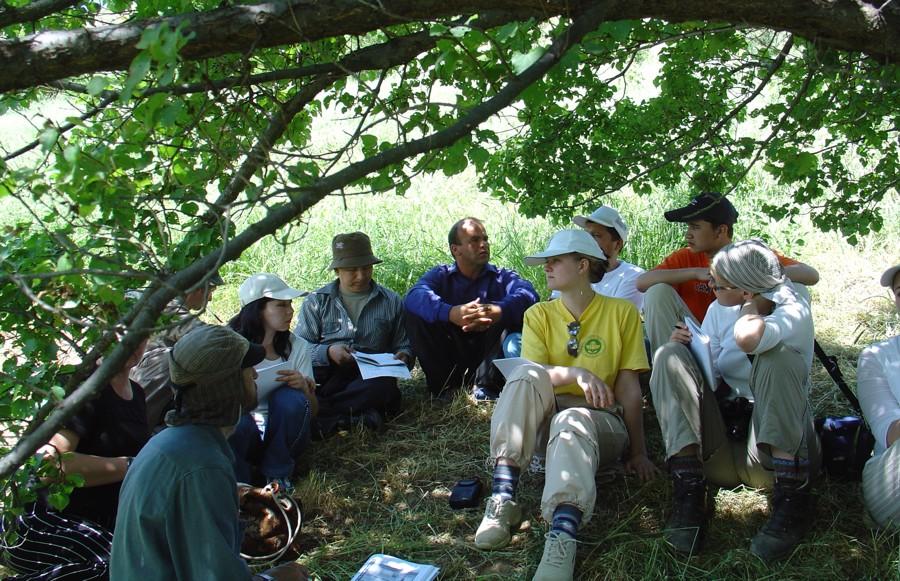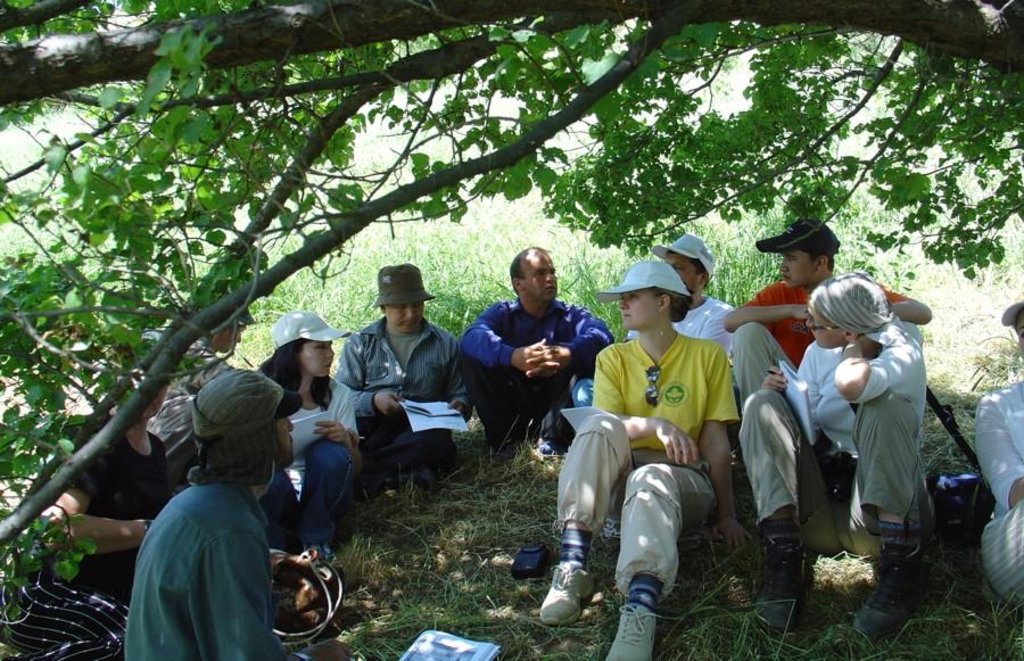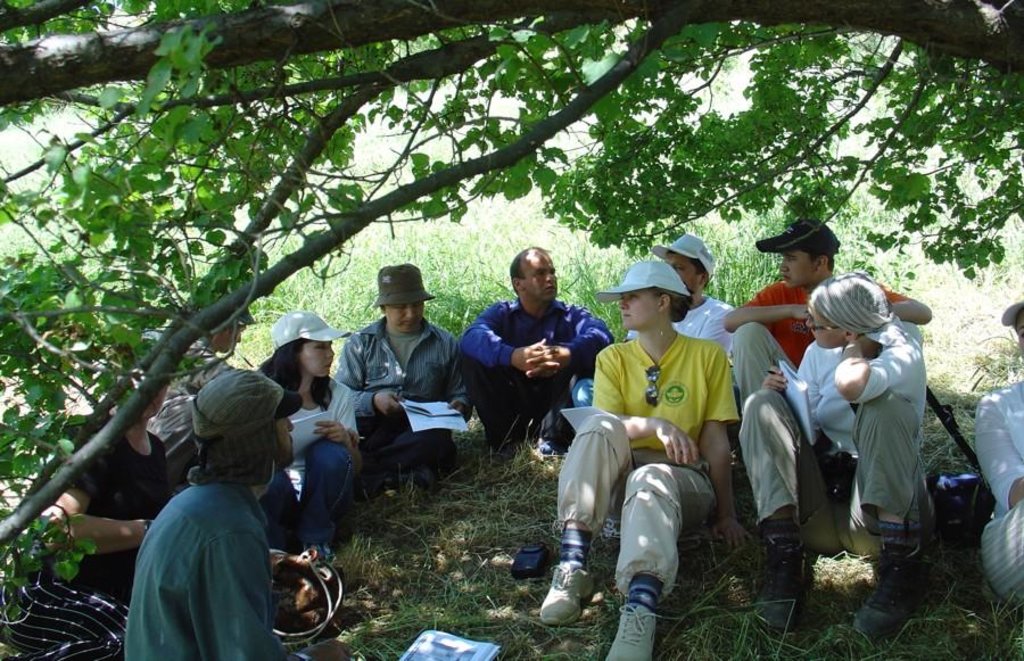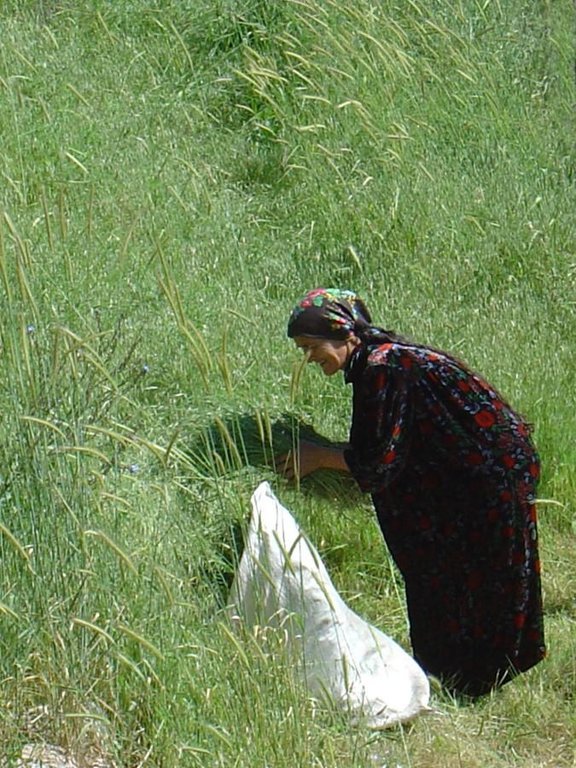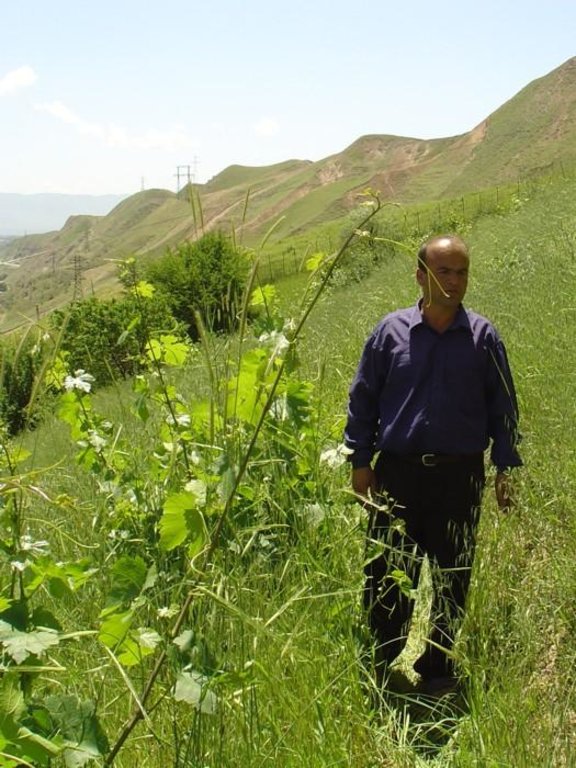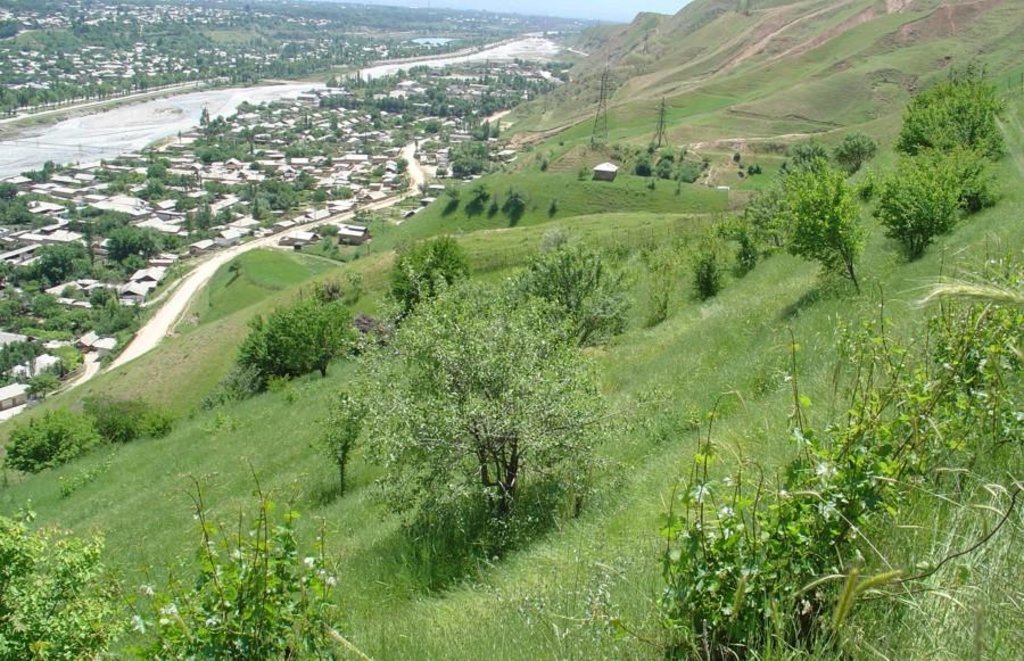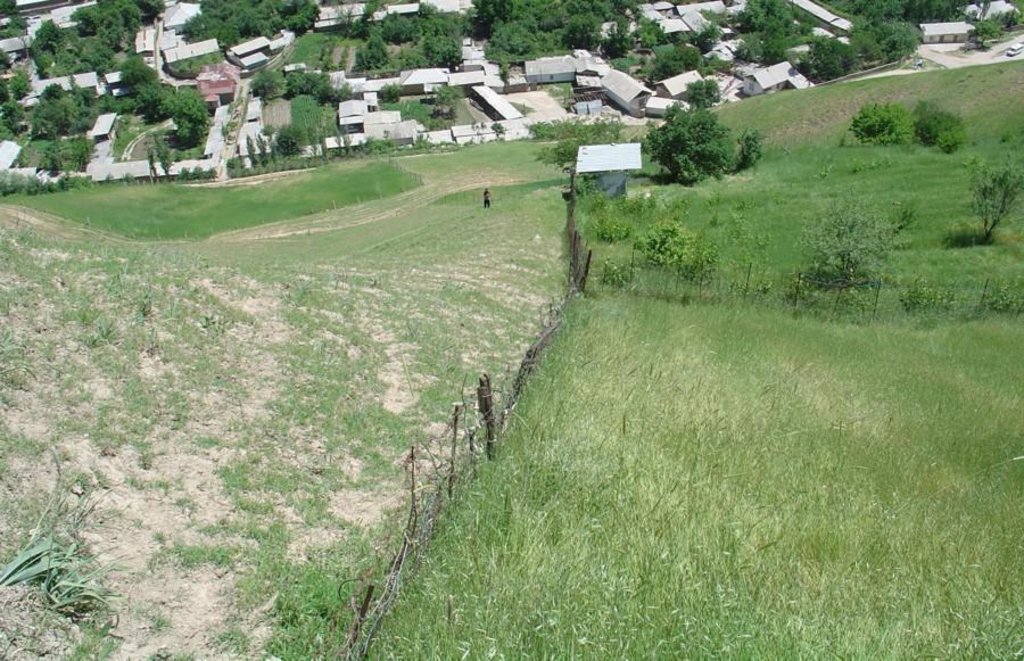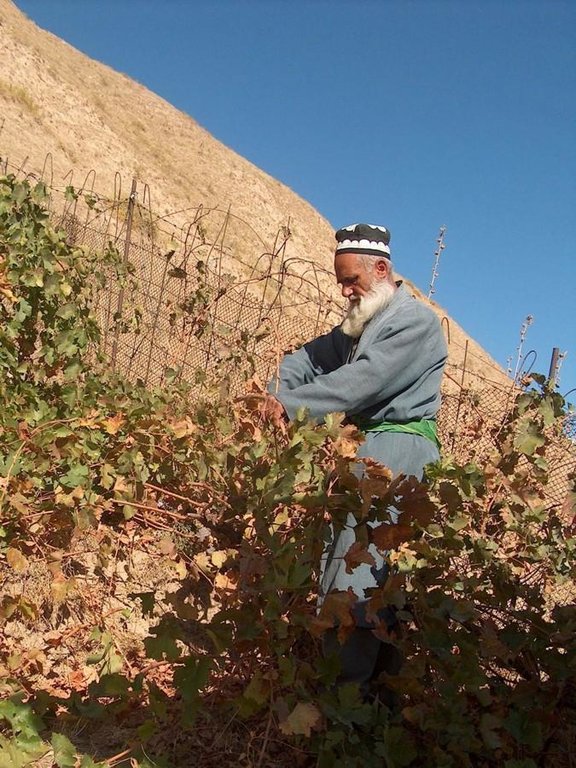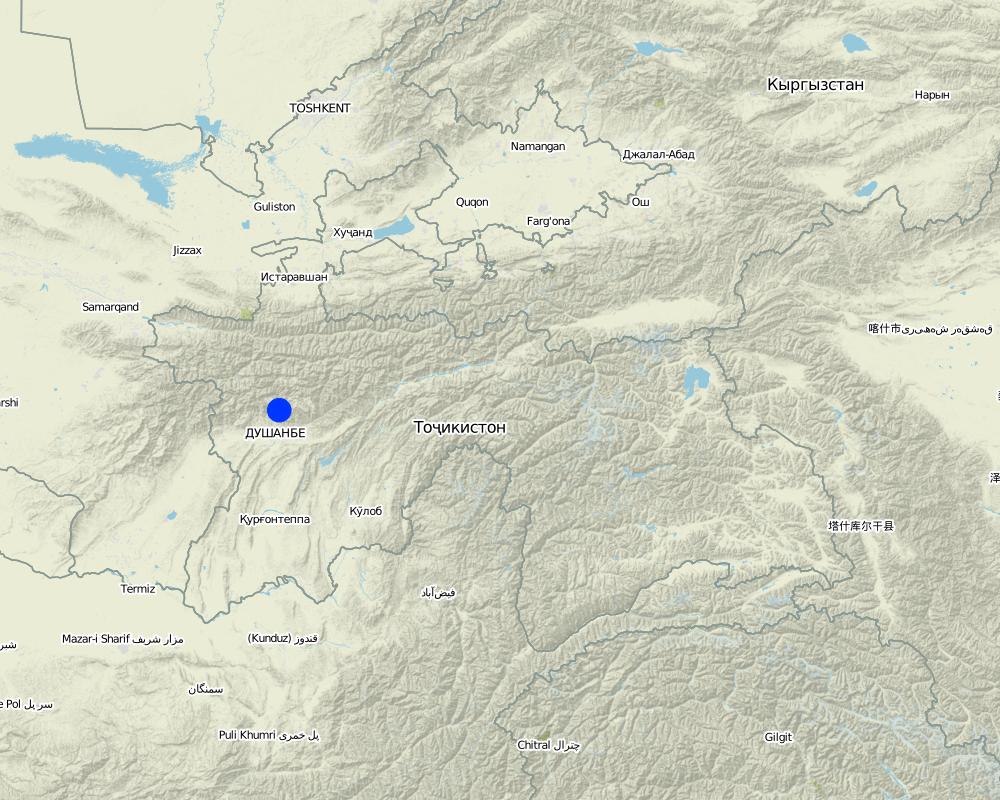Farmer innovation and self-help group [塔吉克斯坦]
- 创建:
- 更新:
- 编制者: Murod Ergashev
- 编辑者: –
- 审查者: David Streiff
approaches_2661 - 塔吉克斯坦
- Farmer innovation and self-help group: Nov. 2, 2021 (public)
- Farmer innovation and self-help group: April 4, 2018 (inactive)
- Farmer innovation and self-help group: Aug. 8, 2017 (inactive)
- Farmer innovation and self-help group: Aug. 7, 2017 (inactive)
- Farmer innovation and self-help group: July 5, 2017 (inactive)
查看章节
全部展开 全部收起1. 一般信息
1.2 参与方法评估和文件编制的资源人员和机构的联系方式
土地使用者:
Sharif Aliev family
Khagatai Village, Rayon of Varzob
塔吉克斯坦
有助于对方法进行记录/评估的机构名称(如相关)
CAMP - Central Asian Mountain Partnership (CAMP - Central Asian Mountain Partnership) - 吉尔吉斯斯坦1.3 关于使用通过WOCAT记录的数据的条件
编制者和关键资源人员接受有关使用通过WOCAT记录数据的条件。:
是
1.4 SLM技术问卷的参考
2. SLM方法的描述
2.1 该方法的简要说明
An innovative land user, assisted by a self-help group has overcome many administrative and technical problems to establish a fruit garden on previously degraded communal grazing land.
2.2 该方法的详细说明
该方法的详细说明:
Aims / objectives: Although in the 1980s the soviet government supported the establishment of private gardens in specified areas, the lack of irrigation water and suitable land often restricted this process. That was the case for Khagatai village, situated on the narrow valley floor of the Varzob River, below steep loess slopes. This marginal area is used for grazing and shows severe signs of water erosion; the hillsides are considered to be of little agricultural value. In the early 1980s, widespread unemployment evidently had the effect of stimulating people to use their own initiative. In 1982, one innovative farmer started to fence-off an area of half a hectare to establish a private fruit garden on the degraded grazing land. Some say that the fencing of plots for private fruit and hay production is a traditional practice - abandoned after the 1950s - but taken up again recently to re-establish rights to individual plots. The practice is widespread in the higher villages of Varzob, where the farmer noted it and decided to set up his own plot. When it came to practical implementation, despite the land user having five sons, the labour-intensive terracing was only completed thanks to the voluntary assistance of relatives and friends, a tradition locally known as 'hashar'. At first, when his initiative began to take shape on land officially owned by a state farm, no action was taken. However, the change in land management quickly showed positive productive results, and it may have been through jealousy that the people of Khagatai village then reported the case to the authorities. The watering of the garden on the unstable loess slope in the immediate vicinity of the village, and the consequent risk of landslides, was put forward as the reason for the complaint. The authorities opened an investigation and a number of newspaper articles were written about the case.
Methods: Since independent decision making was not common in the soviet states, and rapid degradation of newly irrigated lands on the loess deposits was a big issue, the case of this fruit garden attracted a lot of attention. However, when they observed the improved state of the vegetation on the plot, the authorities finally allowed the farmer to continue. In 1993 the prohibition on private cultivation of land was lifted in order to reduce problems of food shortage caused during the civil war that followed independence. It was during this time that four other land users from Khagatai village spontaneously began to imitate this practice.
2.3 该方法的照片
2.5 采用该方法的国家/地区/地点
国家:
塔吉克斯坦
区域/州/省:
Khagatai
有关地点的进一步说明:
Varzob
Map
×2.6 该方法的开始和终止日期
注明开始年份:
1982
2.7 方法的类型
- 传统/本土
2.8 该方法的主要目的/目标
To establish an orchard with grape vines, fruit trees and fodder crops for private use.
The SLM Approach addressed the following problems: The land in question is part of a communal grazing area and property rights are officially with Khagatai village (in Soviet times with a state farm). Uncontrolled grazing on communal lands has resulted in overgrazing, and thus to progressive water erosion on the steep loess deposits. No attention was paid by the local authorities to soil and water conservation measures in areas considered to be of low agricultural potential.
2.9 推动或妨碍实施本办法所适用的技术的条件
社会/文化/宗教规范和价值观
- 阻碍
Jealousy of other village members, who didn't like another land user fencing off a plot in communal grazing land.
Treatment through the SLM Approach: Others became convinced after the change in land use. Newspaper articles on the case also helped to form public opinion.
财务资源和服务的可用性/可得性
- 阻碍
All inputs had to be provided by the land user himself.
Treatment through the SLM Approach: Creative ways were developed to provide material for fencing, for transportation of irrigation water and for access to manure.
机构设置
- 阻碍
Private initiatives on state land were not encouraged under the soviet system.
Treatment through the SLM Approach: Activities tended to start on marginal land that was of little agronomic interest to state farms.
法律框架(土地使用权、土地和水使用权)
- 阻碍
No individual property rights.
Treatment through the SLM Approach: In soviet times the land belonged to a state farm. Today the land belongs to Khagatai village: efforts to achieve official
了解SLM,获得技术支持
- 阻碍
For the establishment of the orchard irrigation water was needed. This had to be brought 200 m up a steep slope.
Treatment through the SLM Approach: Water in old inner tubes was transported to the orchard by donkey.
其他
- 阻碍
Availability of labour: Construction of terraces for tree planting is very labour intensive.
Treatment through the SLM Approach: Voluntary work of relatives and friends.
3. 相关利益相关者的参与和角色
3.1 该方法涉及的利益相关者及其职责
- 当地土地使用者/当地社区
Mainly men participated: Women are not usually expected to carry out field activities for cultural reasons. The coffee harvest is the only activity where men and women work together in the field.
3.2 当地土地使用者/当地社区参与该方法的不同阶段
| 当地土地使用者/当地社区的参与 | 指定参与人员并描述活动 | |
|---|---|---|
| 启动/动机 | 自我动员 | individual land user; the initiative was initiated by an individual land user |
| 计划 | 自我动员 | step by step |
| 实施 | 自我动员 | land user; the project was implemented by the individual land user, relatives and neighbours participated voluntarily in terrace construction |
| 监测/评估 | 自我动员 | by the individual land user; the project is monitored and evaluated by the individual land user |
| Research | 互动 | post-implementation documentation (participatory) |
3.4 有关SLM技术选择的决策
具体说明谁有权决定选择要实施的技术:
- 仅限土地使用者(自主)
解释:
Decisions on the method of implementing the SLM Technology were made by by land users alone (self-initiative / bottom-up)
4. 技术支持、能力建设和知识管理
4.1 能力建设/培训
是否为土地使用者/其他利益相关者提供培训?:
否
4.2 咨询服务
土地使用者有权使用咨询服务吗?:
是
- through interaction of land users
说明/注释:
Key elements: Observations, farmer-to-farmer exchange of ideas.
4.3 机构强化(组织发展)
是否通过这种方法建立或加强了机构?:
- 否
4.4 监测和评估
监测和评估是该方法的一部分吗?:
是
注释:
Bio-physical aspects were ad hoc monitored by land users through observations; indicators: growth of seedlings
Economic / production aspects were ad hoc monitored by 0 through observations; indicators: comparison of yields between different years
no. of land users involved aspects were ad hoc monitored by 0 through observations; indicators: None
There were few changes in the Approach as a result of monitoring and evaluation: There were a few changes due to the observations made by the land user: he started to apply supplementary irrigation to the tree seedlings, as well as applying manure each year.
4.5 研究
研究是该方法的一部分吗?
是
提供进一步的细节,并指出是谁做的研究:
There had been no research until the identification and documentation of this initiative through a Tajik-Swiss project under the framework of the National Centre of Competence in Research (NCCR) North-South (coordinated by the the Centre for Development and Environment, Switzerland).
5. 融资和外部物质支持
5.1 该方法中SLM组成部分的年度预算
注释(例如主要的资助来源/主要捐助者):
Approach costs were met by the following donors: other (land user/private): 100.0%
5.2 为土地使用者提供财政/物质支援
土地使用者是否获得实施该技术的财政/物质支持?:
否
5.3 对特定投入的补贴(包括劳动力)
注释:
All the inputs were fully financed by the land user himself. This included hand tools, fruit tree seedlings, vines, manure, supplementary irrigation, water transport by donkey and by car.
5.4 信用
是否根据SLM活动的方法给予信用值?:
否
5.5 其它激励或手段
是否有其他激励措施或工具用于促进SLM技术的实施?:
否
6. 影响分析和结论性陈述
6.1 方法的影响
该方法是否帮助土地使用者实施和维护SLM技术?:
- 否
- 是,很少
- 是,中等
- 是,支持力度很大
There has been a significant, though localised, improvement in soil and water management.
该方法是否有助于社会和经济弱势群体?:
- 否
- 是,很少
- 是,中等
- 是,支持力度很大
Did other land users / projects adopt the Approach?
- 否
- 是,很少
- 是,中等
- 是,支持力度很大
Other land users from Khagatai village have adopted the system on the same hillside. They started fencing-off plots in the 1990s during the civil war. At that time many people were unemployed, and labour was therefore available. Furthermore there was a shortage in food supplies and people relied on . It was very unusual during the soviet times for a villager to take the initiative to establish a private plot on state land. However in this example, the success in establishing a vineyard on an overgrazed hill convinced the administration of its worth. Other land users have now followed this approach.
Did the Approach lead to improved livelihoods / human well-being?
- 否
- 是,很少
- 是,中等
- 是,支持力度很大
Did the Approach help to alleviate poverty?
- 否
- 是,很少
- 是,中等
- 是,支持力度很大
6.2 土地使用者实施SLM的主要动机
- 增加生产
- 环境意识
- well-being and livelihoods improvement
6.3 方法活动的可持续性
土地使用者能否维持通过该方法实施的措施(无外部支持的情况下)?:
- 是
若是,请说明如何维持:
Because this approach is based on local initiatives there is no reason why it should not be sustainable. The insecure land use rights are the only potential risk to the continuation of the activities.
6.4 该方法的长处/优点
| 土地使用者眼中的长处/优势/机会 |
|---|
| Rehabilitation of marginal land for production and generation of additional income. (How to sustain/ enhance this strength: Give property rights to land users to motivate further investments in soil and water conservation/production.) |
| 编制者或其他关键资源人员认为的长处/优势/机会 |
|---|
| Bottom-up approach: independent decision making by the individual land user based on dynamic and flexible responses as required. (How to sustain/ enhance this strength: Give property rights to land users to motivate further investments in soil and water conservation/production.) |
6.5 该方法的弱点/缺点以及克服它们的方法
| 编制者或其他关键资源人员认为的弱点/缺点/风险 | 如何克服它们? |
|---|---|
| Current systems of land ownership, currently the land belongs to Khagatai. | Provide land ownership to the farmers. |
| Not all farmers can apply this technology since it is location specific. | Identify if fodder production (cut-and-carry) would be more attractive than open grazing; allocate land to the farmers. |
| Only families with sufficient labour resources can establish such a garden by themselves. | Incentives from the state or other organisations are needed. |
| Since it is an initiative of an individual land user, the SWC technology has not been documented so far, nor evaluated, and lessons learned have not been spread among the land users. | Documentation and spreading of lessons learned. |
链接和模块
全部展开 全部收起链接
无链接
模块
无模块


